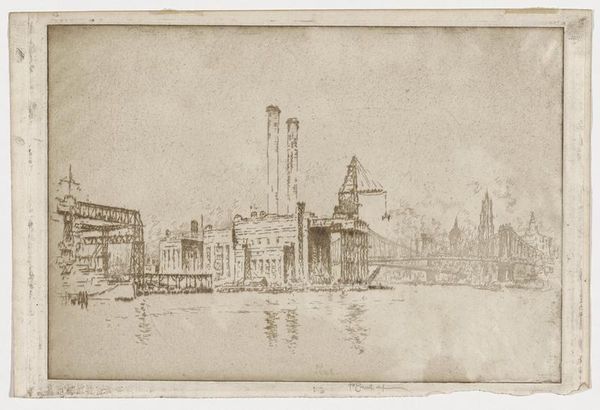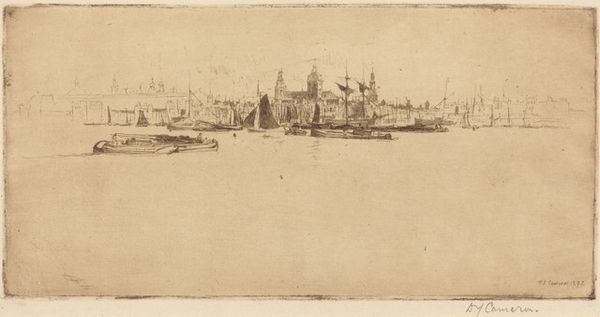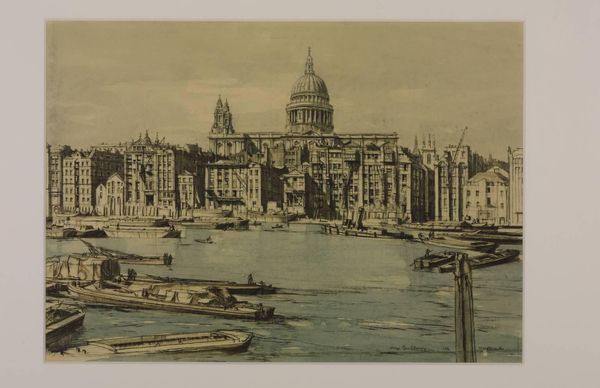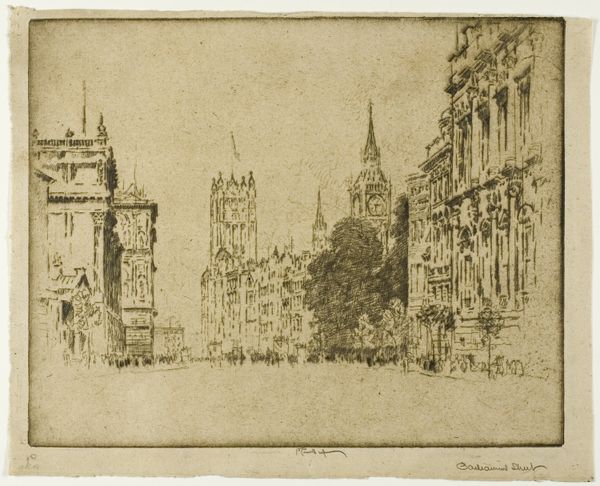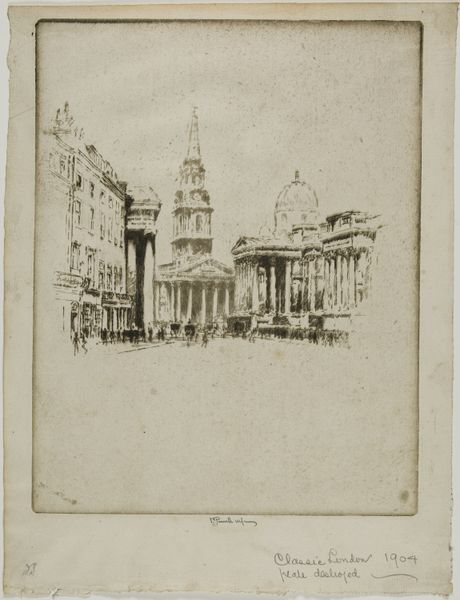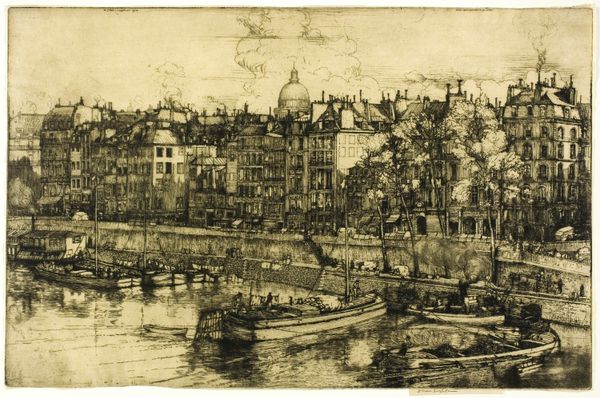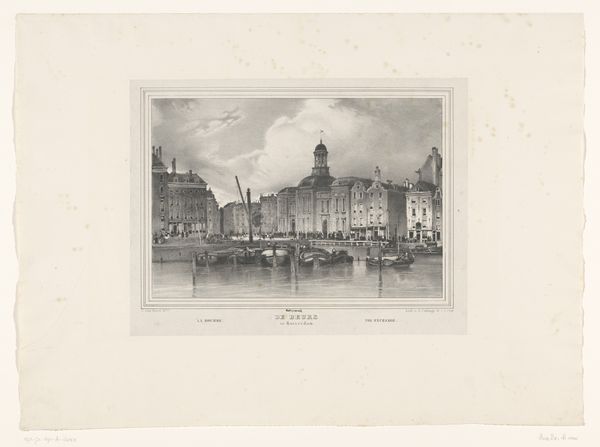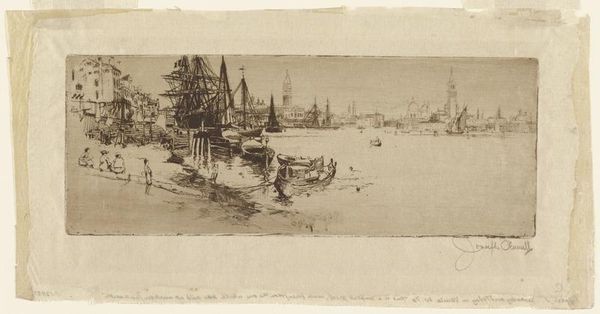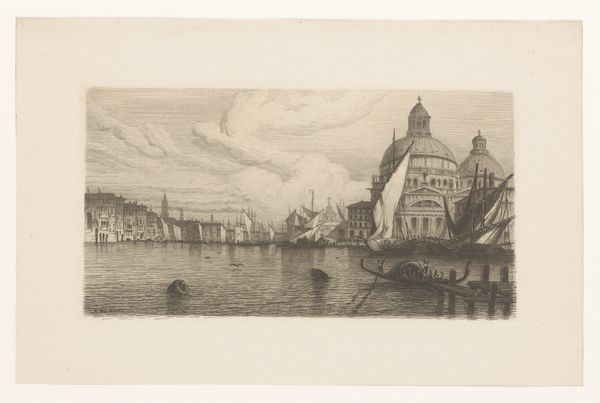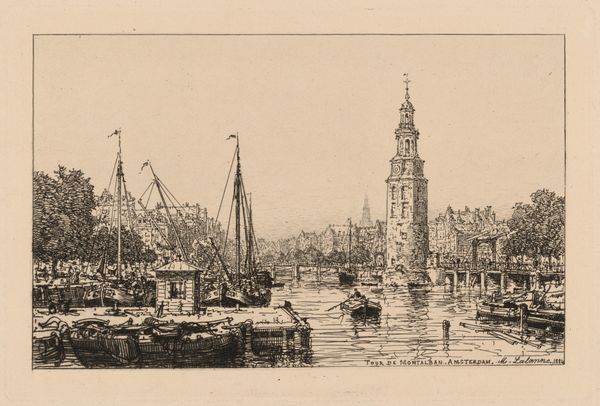
drawing, graphic-art, print, etching
#
drawing
#
graphic-art
# print
#
etching
#
landscape
#
etching
#
cityscape
Dimensions: 8 1/2 x 10 3/4 in. (21.59 x 27.31 cm) (plate)9 1/4 x 14 1/2 in. (23.5 x 36.83 cm) (sheet)
Copyright: No Copyright - United States
Curator: Joseph Pennell created this etching, titled "Greenwich from the River," in 1906. It resides here at the Minneapolis Institute of Art. Editor: It feels hazy, almost dreamlike. The muted tones and the way the architecture seems to float above the water create a very specific, almost wistful mood. Curator: Pennell was an American expatriate who became known for his prints documenting industrial scenes and cityscapes around the world, particularly during the rise of industrialization. This view of Greenwich captures that specific moment, the blending of established maritime power with emerging technologies. Editor: The etching technique lends itself beautifully to that industrial aesthetic, doesn't it? You can see the hand at work – the labor involved in creating those delicate lines and textures. It's not just a representation of Greenwich; it's a record of the artistic process, and that's labor. Curator: Absolutely, and consider Greenwich's historical role as the center of British naval power and the site of the Royal Observatory. Pennell is not simply depicting a pretty scene, he's engaging with ideas of empire, scientific progress, and national identity at the height of British power. The placement of the buildings and the ships on the Thames reflects the wealth that passed through this artery of empire. Editor: And yet, it’s such an ephemeral portrayal, even fragile, like it could disappear in the Thames’s mist at any second. Is Pennell implying this hub of power won't last forever? Curator: Perhaps. Prints, because of their accessibility and reproducibility, often circulated social and political messages, sometimes more subtly than a grand painting would allow. They found their audience in magazines, periodicals and as decorations in private homes and public buildings, often spreading pro empire sentiment. It made it into many places a grand oil painting may have not. Editor: What do you think it meant to bring the perspective of the artist’s hand in production for mass circulation? Do the layers of work expose anything that the establishment tries to sweep under the rug? Curator: That’s something that art historians have studied in-depth for years. What a pleasure to encounter this glimpse of old Greenwich from the river. Editor: Agreed. It really emphasizes how art is always entwined with labor, production and consumption. A moment frozen.
Comments
No comments
Be the first to comment and join the conversation on the ultimate creative platform.
